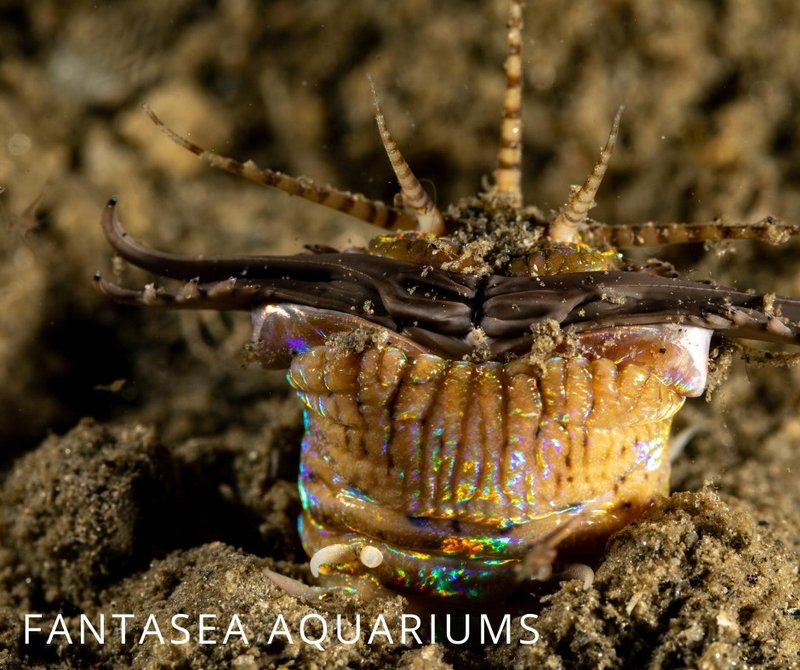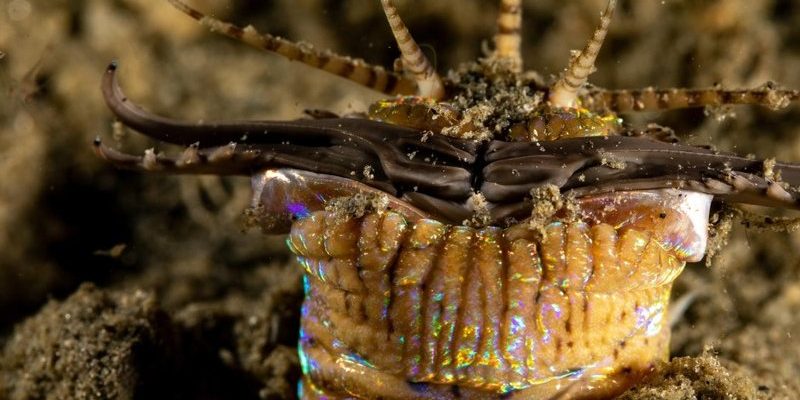
Now, before you rush out to find one for your aquarium, let’s take a step back. You might be wondering what exactly a Bobbit worm is and whether they can even thrive in an aquarium setting. Let me explain: Bobbit worms are long, predatory creatures that can grow up to 10 feet long, but they usually stay hidden, lurking in the sand until they sense their next meal. They’re fascinating, but they also come with specific care requirements. So, can they be kept in home aquariums? Let’s dive right in!
What Are Bobbit Worms?
Bobbit worms, scientifically known as *Eunice aphroditois*, are marine annelids that live in the ocean’s depths. They’re often recognized for their elongated bodies and sharp jaws, which they use to ambush their prey. Picture them as deep-sea ninjas, silently waiting for unsuspecting fish to swim by. These worms can be quite impressive, measuring up to 10 feet in length, although most you’ll encounter are much shorter.
Their habitats are usually sandy or muddy substrates, where they can burrow and remain hidden. This behavior plays a crucial role in their survival, as they depend on camouflage to avoid both predators and potential collectors. So, if you’re thinking about housing a Bobbit worm in your aquarium, keep in mind that they appreciate a mixed substrate where they can dig in and feel secure.
Feeding Habits of Bobbit Worms
You might be curious about what Bobbit worms eat. Here’s the thing: they’re opportunistic predators. They typically feed on small fish, crustaceans, and even other marine worms. Their method of catching prey is both efficient and dramatic—they extend their jaws from their burrows to snatch unsuspecting fish. Imagine a snake striking its prey, only in a watery environment!
For your home aquarium, you’ll need to provide a diet that mimics their natural feeding habits. This could include small fish or invertebrates. However, you should be cautious about introducing live food, especially if you have smaller or more vulnerable inhabitants in your tank. A Bobbit worm might consider them a tasty snack!
Can Bobbit Worms Live in a Home Aquarium?
Now onto the burning question: can Bobbit worms actually thrive in home aquariums? The simple answer is yes, but there are a few caveats. First, it’s essential to create an environment that mimics their natural habitat, which includes adequate space, substrate, and a stable water quality.
Most experienced aquarists recommend a tank size of at least 50 gallons for a single Bobbit worm. Smaller tanks may not provide enough space for them to burrow and move freely. Additionally, Bobbit worms thrive best in saltwater environments with a stable salinity level. Ensure you’re prepared for the commitment of maintaining a marine aquarium, which can involve regular testing and adjustments to water parameters.
Tank Conditions for Bobbit Worms
To keep a Bobbit worm healthy and happy, you’ll need to focus on several crucial tank conditions:
- Water Quality: The pH level should ideally be between 7.8 and 8.4. Regular water changes are key to maintaining a stable environment.
- Temperature: Keep the water temperature between 75°F and 80°F (24°C to 27°C).
- Substrate: Use a mix of sand and fine gravel to allow the worm to burrow comfortably.
- Flow Rate: A gentle water flow is ideal. Too much current can disturb their burrows.
Creating the perfect environment may require some experimentation, but it’s rewarding to watch your Bobbit worm thrive in its new home.
Potential Issues with Keeping Bobbit Worms
While Bobbit worms can be a captivating addition to your aquarium, there are some potential issues to consider. First and foremost, their predatory nature means they may pose a threat to smaller fish and invertebrates. If you plan to house a Bobbit worm, you’ll need to carefully choose tank mates that are large enough to avoid being prey.
Another common problem is that Bobbit worms can sometimes be elusive. They tend to hide well, making it difficult to monitor their health or even locate them in the tank. If you’re the type of aquarist who enjoys observing every creature in your aquarium, this might be a downside for you.
Lastly, keep in mind that Bobbit worms can grow quite large. Regularly assess your tank size to ensure that your Bobbit worm has ample space to thrive. You wouldn’t want to find your aquarium cramped, right?
Alternatives to Bobbit Worms
If the challenges of keeping a Bobbit worm seem daunting, there are alternatives worth considering.
- Smaller Worms: Species like bristle worms or feather duster worms can still provide an interesting dynamic without the predatory risks.
- Corals: If you’re keen on having vibrant life in your tank, corals can add both beauty and complexity without the same concerns that come with maintaining a predatory worm.
- Small Fish: If you’re after movement, consider peaceful fish like clownfish or gobies that can coexist safely in a community tank.
These alternatives can still offer a delightful aquarium experience without the challenges of keeping a mysterious Bobbit worm.
In the end, whether you decide to keep Bobbit worms in your home aquarium boils down to your experience level and what you’re looking to achieve. They can be fascinating and unique, but they also require specific conditions and careful consideration of tank mates. If you’re up for a bit of a challenge and want to bring a slice of the underwater world into your home, they could be a great fit.
Just remember to do plenty of research, prepare your aquarium well, and understand both the joys and responsibilities that come with having a Bobbit worm as a pet. Honestly, they might just surprise you with their hidden beauty and fascinating behaviors. So, could a Bobbit worm be the next addition to your underwater adventure? You bet!

